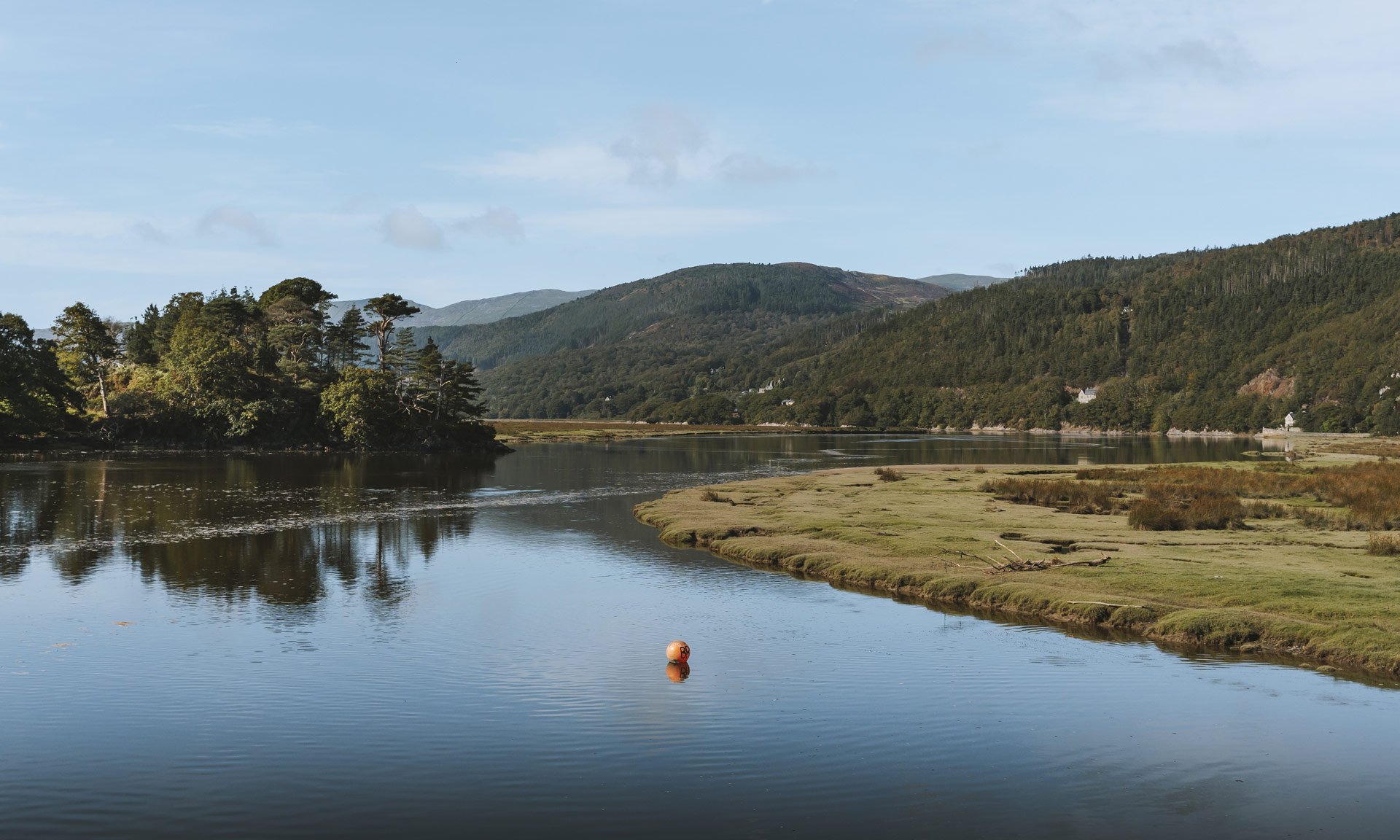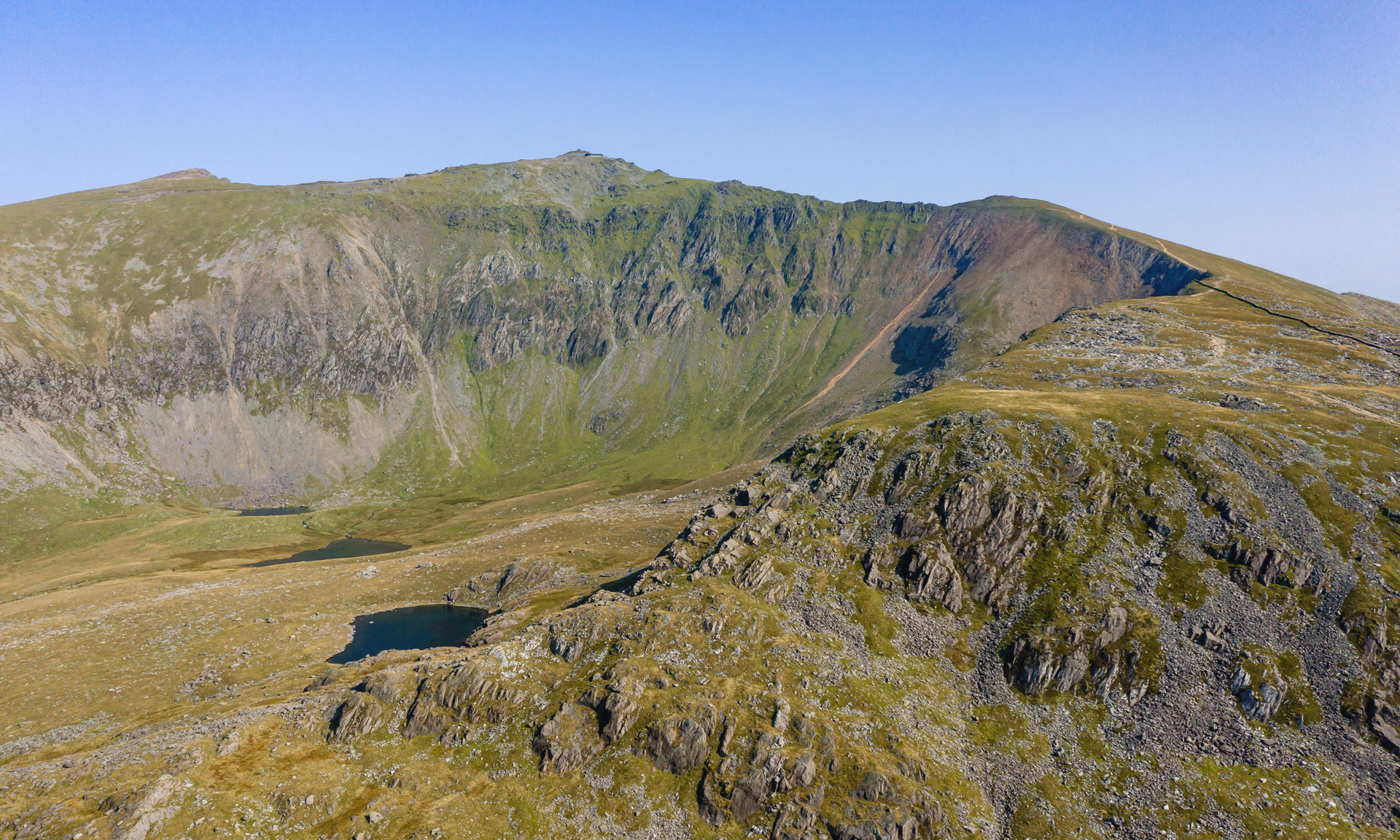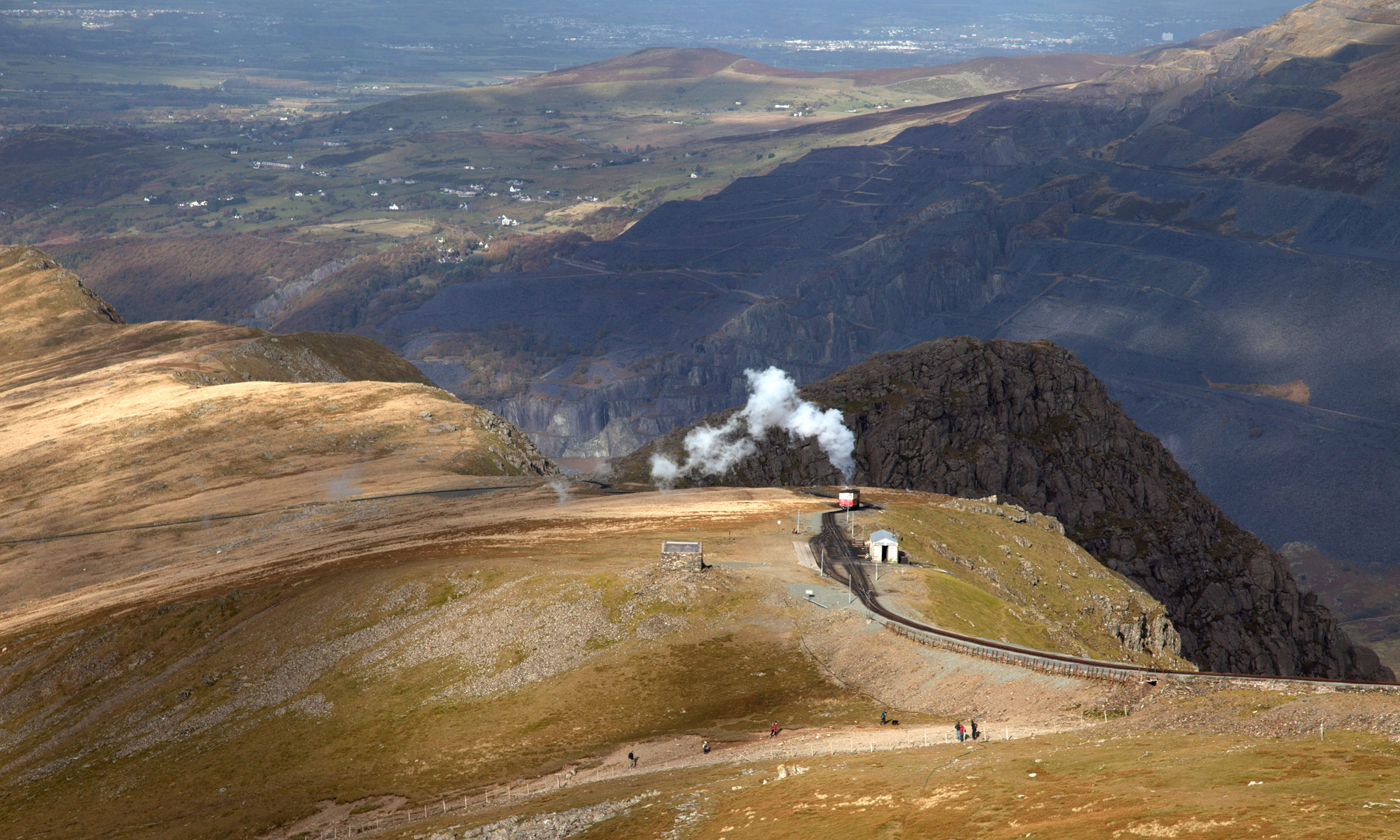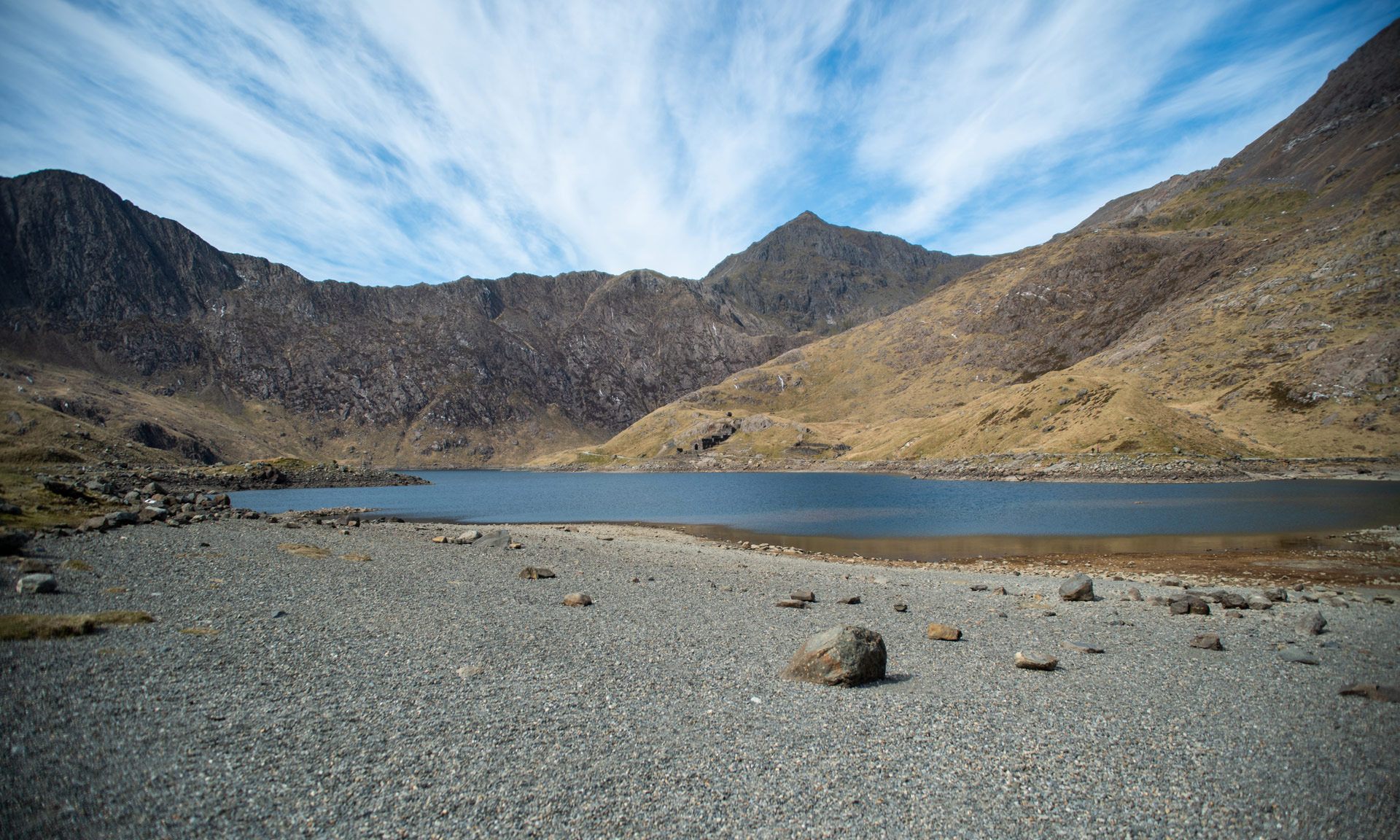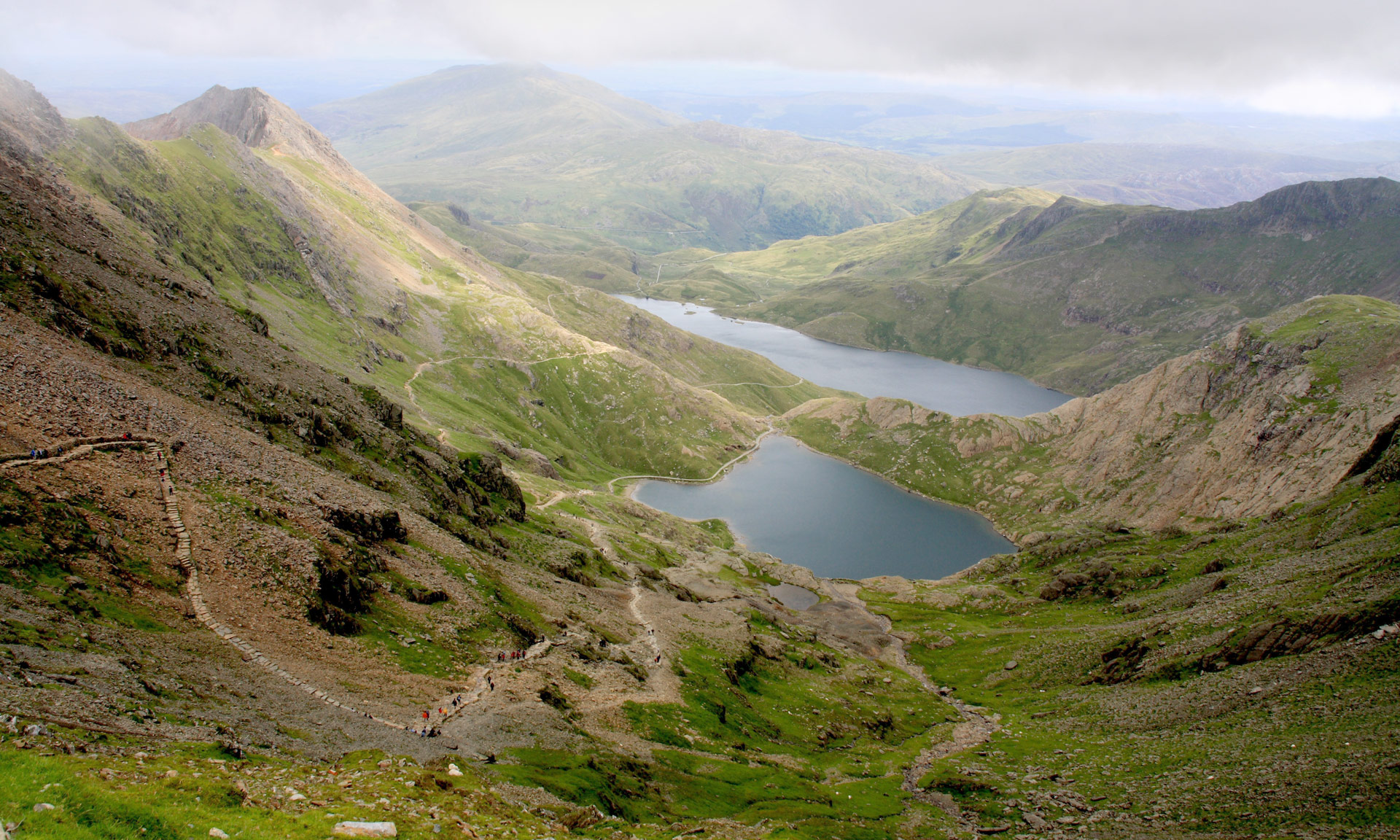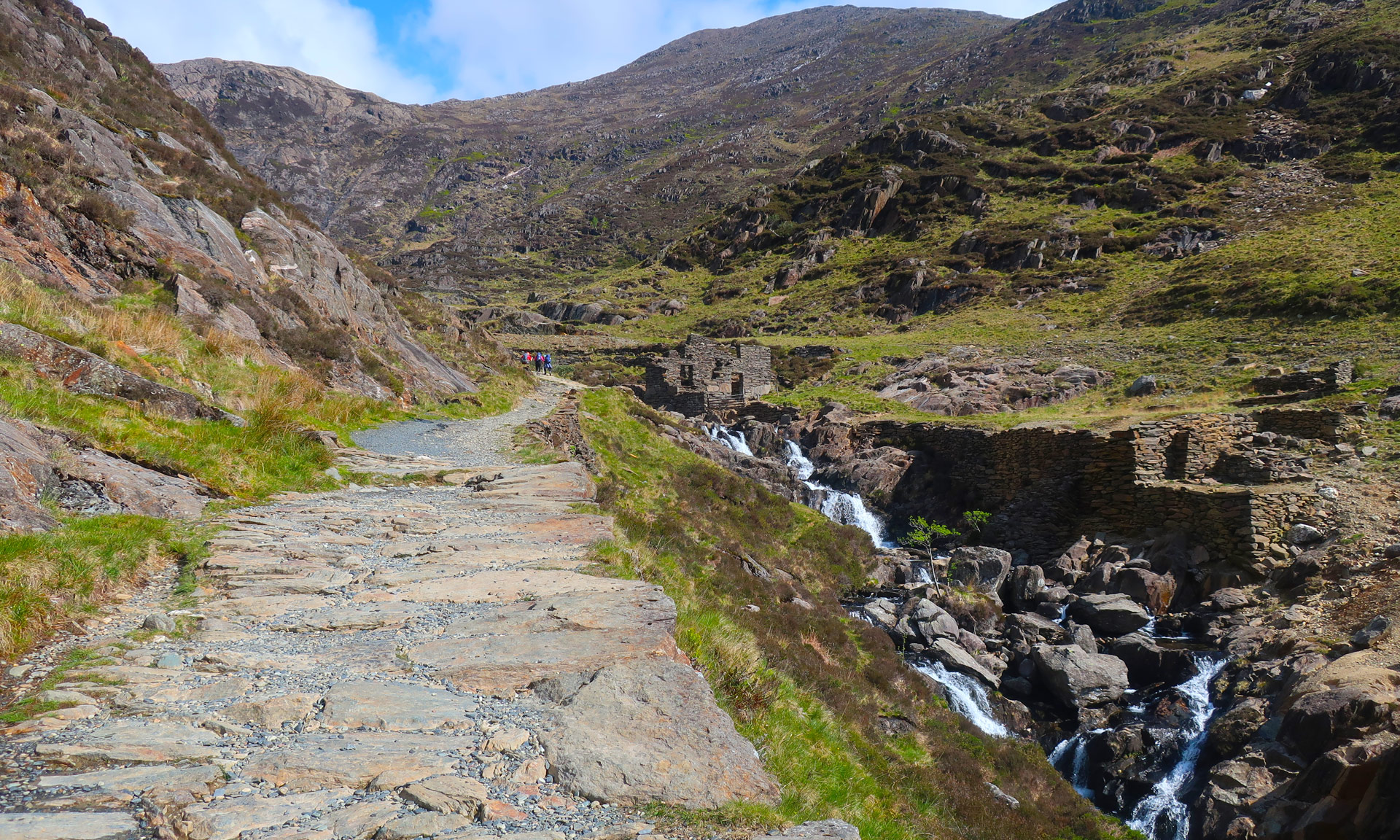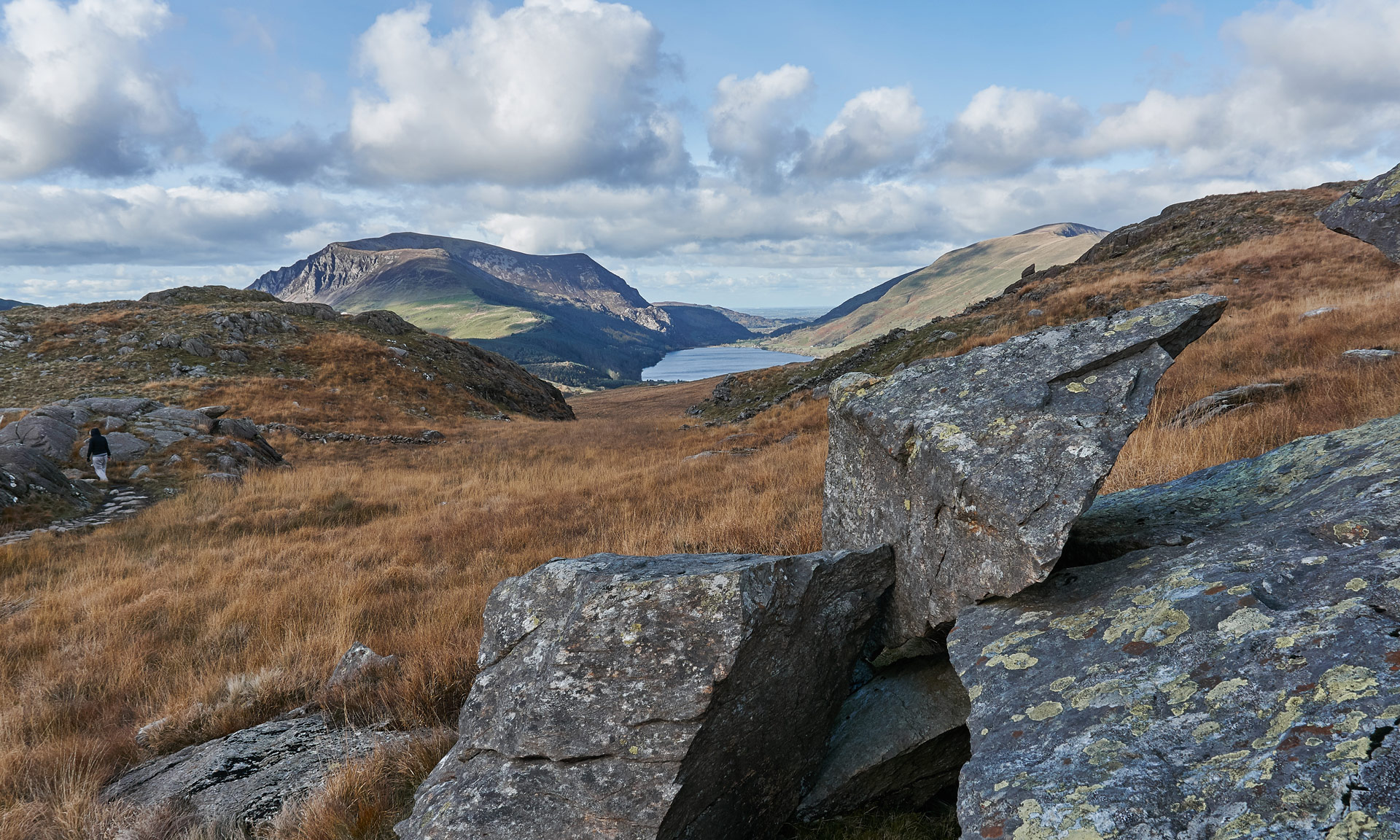One of the earliest routes to the summit of Yr Wyddfa
The Snowdon Ranger is believed to be the earliest of the six main routes to the summit of Yr Wyddfa.
The route starts at the shores of Llyn Cwellyn, giving the path its Welsh name of Llwybr Cwellyn (Cwellyn Path). It climbs gradually to the slopes of Moel Cynghorion and over to Bwlch Cwm Brwynog before ascending steeply above Clogwyn Du’r Arddu and merging with the Llanberis Path to the summit.
Why this path?
Reaching the summit of Yr Wyddfa is a challenging undertaking. The National Park Authority classifies all of the routes up Yr Wyddfa as hard, strenuous routes. A good level of fitness is required, and navigation skills are essential.
The Snowdon Ranger Path is one of two paths ascending the western slopes of the Yr Wyddfa massif. It can be an alternative to experienced walkers and offers fantastic views of the lesser-seen parts of the area.
Yr Wyddfa Ground Conditions Reports
Yr Wyddfa Ground Conditions Reports are now available on the Yr Wyddfa Live website.
© Crown copyright and database rights OS AC0000825604. Use of this data is subject to terms and conditions.
The National Park Authority has categorises this route as Hard/Strenuous. It is only suitable for experienced country walkers with a good level of fitness. Navigation skills are essential. The terrain will include steep hills and rough country and may include some sections of scrambling. Full hill walking gear is essential, and specialist equipment might be required under winter conditions.
Start / Finish
Llyn Cwellyn Car Park, off the A4085 (SH 564 551)
Relevant OS Map
OS Explorer OL17 (yr Wyddfa and the Conwy Valley)
Sherpa’r Wyddfa
The Sherpa’r Wyddfa bus service is a convenient service that stops at the trailhead of all six routes to the summit of Yr Wyddfa.
For the Snowdon Ranger Path, the best connections are from Caernarfon and Porthmadog.
Snowdon Ranger Path Bus Stop
Snowdon Ranger YHA
For more information about getting to Yr Wyddfa, read the National Park Authority’s comprehensive ‘Getting to Yr Wyddfa’ guide or visit the Sherpa’r Wyddfa website.
Parking
Llyn Cwellyn Car Park
Llyn Cwellyn Car Park on Google Maps
If you’re using the Sherpa’r Wyddfa bus service:
Caernarfon Car Park on Google Maps
Porthmadog Car Park on Google Maps
Yr Wyddfa Ground Conditions Reports are now available on the Yr Wyddfa Live website.
Yr Wyddfa is a challenging mountain to hike. Venturing to the summit should not be taken lightly. Factors such as the seasons, your fitness level, your mountaineering skills, your preparations beforehand, and the mountain’s popularity can all affect your experience of Yr Wyddfa.
Charitable walks and events on Yr Wyddfa are a popular way to raise funds for various charities and organisations. However, you should always take care when taking part in such events. Climbing Yr Wyddfa isn’t an easy undertaking.
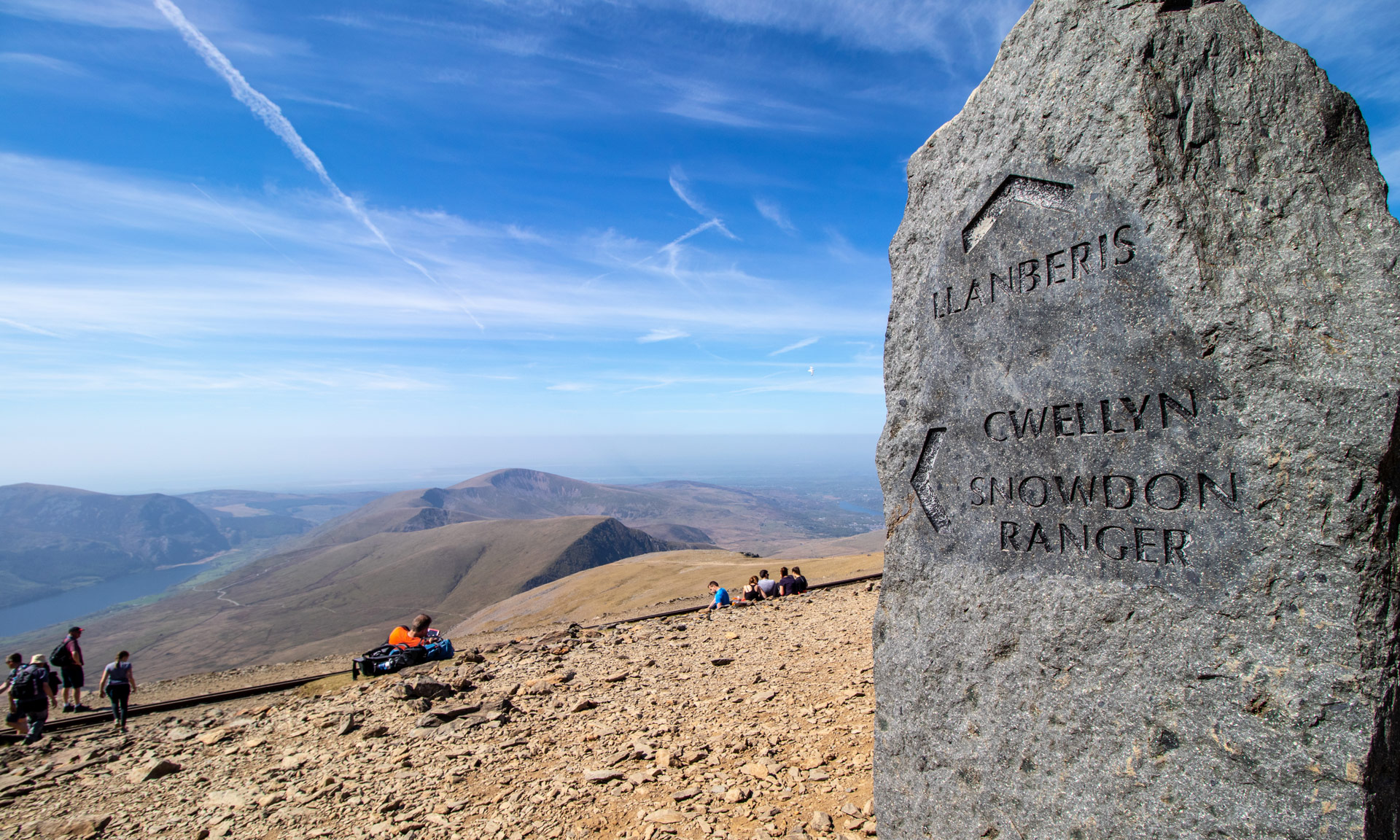
The Route’s Name
The Snowdon Ranger Path is the only route to the summit of Yr Wyddfa with entirely different names in Welsh and English. Its Welsh name, Llwybr Cwellyn (Cwellyn Path), is most likely named after the route’s starting point on the shores of Llyn Cwellyn.
However, a mountain guide called John Morton was the inspiration behind the route’s English name. Morton, who called himself the ‘Snowdon Ranger’, had built an inn on the shores of Llyn Cwellyn during the 19th century, where he would set off on guided hikes to the summit of Yr Wyddfa. Today, the inn operates as a youth hostel and can be seen opposite Llyn Cwellyn’s car park.
Mythology and folklore
The route will offer fantastic views down towards Llyn Cwellyn, where the slopes of Mynydd Mawr ascend gracefully from the lake’s western shore.
Coniferous forest makes up the lower foothills of Mynydd Mawr. However, on the right, towards the far end of the lake, you might notice a prominent crag where the forest comes to an end. The rock is known as Castell Cidwm (Cidwm’s Castle). Legend tells that this was the home of Cidwm—a giant who lived in a cave within the rock.
As you near Bwlch Cwm Brwynog, a lake will come into sight on your right called Llyn Ffynnon y Gwas. The name translates to ‘the lake of the servant’s spring’, and it is thought that it was named after a shepherd who drowned in its waters while washing his master’s sheep. The remains of an old stone sheepfold can be seen on the lake’s northern end – perhaps proof that there is truth behind the story.
